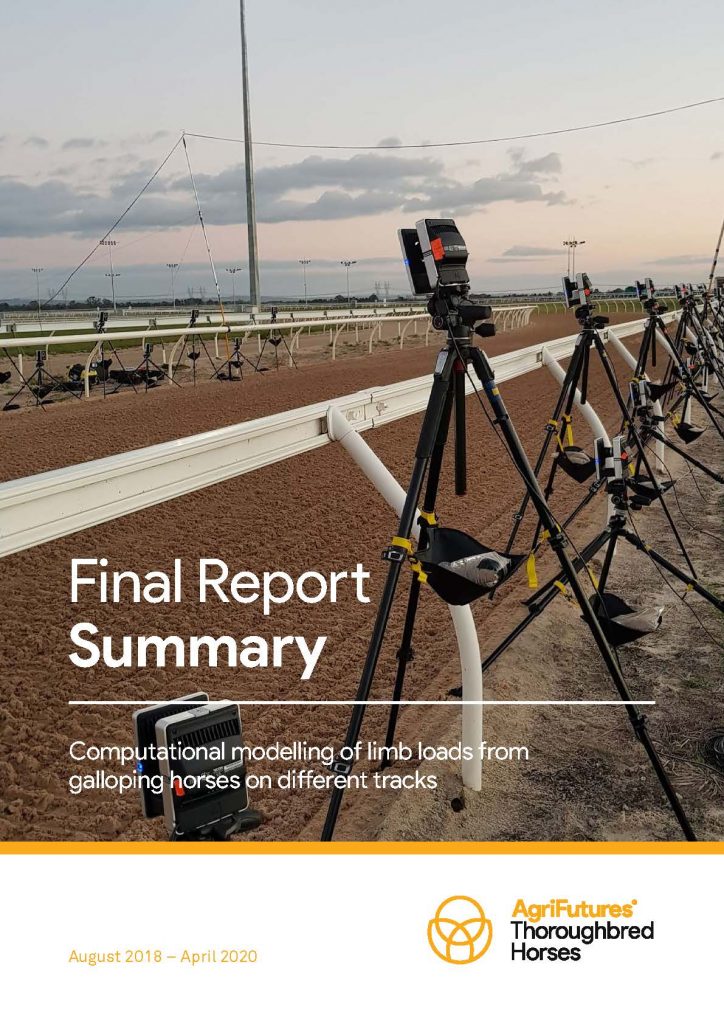The high loads generated in horses’ limbs during galloping cause deterioration of bone, cartilage, tendons and ligaments. This process is the most common cause of muscle, joint and bone injuries in racehorses. The amount of tissue damage caused by galloping depends on two factors – the size of the load generated in the limbs during each stride, and on the number of times the load is applied. It is difficult to accurately measure and evaluate such loads in a galloping horse, so there is little data about it, despite its importance as a cause of injury.
The objective of this project was to develop a deeper understanding of track surface properties that affect limb loads in galloping horses. To achieve this, we aimed to:
Collect motion data in three dimensions of three thoroughbred racehorses galloping on a treadmill, and on sand and synthetic racetrack surfaces.
Create computer models of a treadmill surface and two different racetrack surfaces (sand and synthetic).
Combine the motion data sets with the track surface models into a full-body computer model of a galloping horse.





